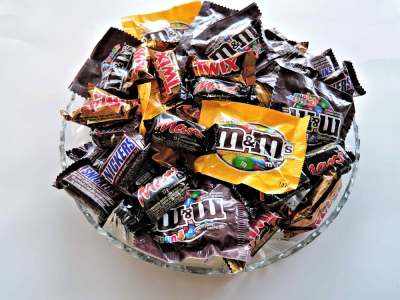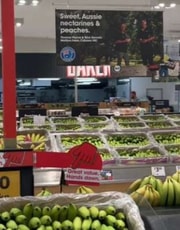‘We've seen the commodity price skyrocket’: The hidden reason behind rising chocolate prices
By
Maan
- Replies 0
For many, Easter is synonymous with indulging in chocolate treats, but this year, a major industry shake-up is threatening to put a dent in festive traditions.
Behind the scenes, a significant global issue is unfolding, one that could make your favourite Easter chocolates noticeably pricier.
As key factors continue to disrupt supply, shoppers may need to brace for some sticker shock at the checkout.
A global cocoa shortage sent chocolate prices soaring in the lead-up to Easter, with industry experts warning that shoppers felt the impact at the checkout.
The price of Easter chocolates was expected to rise by as much as 20 per cent.
Poor weather conditions and crop disease affected cocoa farms in West Africa, where most of the world’s supply was grown.
For years, global cocoa prices hovered around US$2,000 ($3,187) per tonne before skyrocketing to US$12,000 (over $19,000) per tonne in 2024.
By early 2024, prices sat at around US$10,000 per tonne, causing ripple effects throughout the industry and leading to increased costs for retailers and consumers alike.
Queensland University of Technology professor Garry Mortimer said the surge in cocoa prices directly impacted the cost of chocolate products.
‘Ultimately we've seen the commodity price of cocoa, essentially chocolate, skyrocket in the last 12 to 18 months,’ Mortimer said.
‘You'd expect to see retail prices lift anywhere between sort of 10 to 20 per cent.’
At Coles, a packet of Cadbury Dairy Milk Eggs cost nearly $7 or two for $10, while a 160-gram Kinder Surprise Bunny was priced at $12.80 and a 200-gram Lindt Gold Bunny at $18.
Woolworths reduced the price of a 300-gram bag of Lindt's Lindor Assorted Chocolate Mini Eggs from $30 to $15, while a packet of Cadbury Creme Egg Minis retailed for $5.
Mortimer noted that rising costs could push shoppers to seek out alternatives to their usual Easter chocolates.
‘I think what we will see is shoppers actually shopping around, moving away from maybe the big supermarkets, maybe moving away from those premium Lindt and Lindor chocolates and aiming for maybe private label products, lower-cost chocolates,’ he said.
Watch the video below to learn more about the cocoa crisis and its effect on the chocolate industry.
In a previous story, we covered how supermarkets were struggling to restock shelves due to shortages of a key staple.
Now, the impact is becoming even more evident as chocolate prices surge ahead of Easter.
Read more about the ongoing supply issues.

With Easter treats getting pricier, will you be sticking to your favourite chocolates or hunting for more budget-friendly alternatives this year? Let us know your thoughts in the comments!
Behind the scenes, a significant global issue is unfolding, one that could make your favourite Easter chocolates noticeably pricier.
As key factors continue to disrupt supply, shoppers may need to brace for some sticker shock at the checkout.
A global cocoa shortage sent chocolate prices soaring in the lead-up to Easter, with industry experts warning that shoppers felt the impact at the checkout.
The price of Easter chocolates was expected to rise by as much as 20 per cent.
Poor weather conditions and crop disease affected cocoa farms in West Africa, where most of the world’s supply was grown.
For years, global cocoa prices hovered around US$2,000 ($3,187) per tonne before skyrocketing to US$12,000 (over $19,000) per tonne in 2024.
By early 2024, prices sat at around US$10,000 per tonne, causing ripple effects throughout the industry and leading to increased costs for retailers and consumers alike.
Queensland University of Technology professor Garry Mortimer said the surge in cocoa prices directly impacted the cost of chocolate products.
‘Ultimately we've seen the commodity price of cocoa, essentially chocolate, skyrocket in the last 12 to 18 months,’ Mortimer said.
‘You'd expect to see retail prices lift anywhere between sort of 10 to 20 per cent.’
At Coles, a packet of Cadbury Dairy Milk Eggs cost nearly $7 or two for $10, while a 160-gram Kinder Surprise Bunny was priced at $12.80 and a 200-gram Lindt Gold Bunny at $18.
Woolworths reduced the price of a 300-gram bag of Lindt's Lindor Assorted Chocolate Mini Eggs from $30 to $15, while a packet of Cadbury Creme Egg Minis retailed for $5.
Mortimer noted that rising costs could push shoppers to seek out alternatives to their usual Easter chocolates.
‘I think what we will see is shoppers actually shopping around, moving away from maybe the big supermarkets, maybe moving away from those premium Lindt and Lindor chocolates and aiming for maybe private label products, lower-cost chocolates,’ he said.
Watch the video below to learn more about the cocoa crisis and its effect on the chocolate industry.
In a previous story, we covered how supermarkets were struggling to restock shelves due to shortages of a key staple.
Now, the impact is becoming even more evident as chocolate prices surge ahead of Easter.
Read more about the ongoing supply issues.
Key Takeaways
- A global cocoa shortage, driven by poor weather and crop disease in West Africa, caused chocolate prices to surge ahead of Easter, with increases of up to 20 per cent.
- Cocoa prices, which remained around US$2,000 per tonne for years, soared to US$12,000 in 2024 before settling at approximately US$10,000, leading to higher retail costs.
- At major supermarkets, Easter chocolate prices varied, with a 200-gram Lindt Gold Bunny reaching $18 and a 160-gram Kinder Surprise Bunny priced at $12.80.
- Experts suggested that rising prices could prompt shoppers to opt for cheaper alternatives, such as private-label chocolates, instead of premium brands.
With Easter treats getting pricier, will you be sticking to your favourite chocolates or hunting for more budget-friendly alternatives this year? Let us know your thoughts in the comments!








